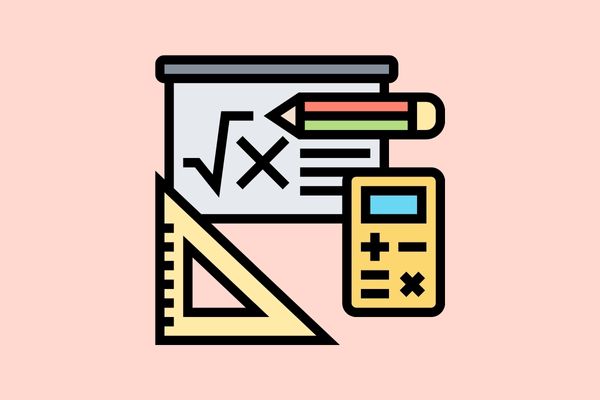Maths Syllabus for CLAT 2025

The Common Law Admission Test (CLAT) is an important entrance examination for students aspiring to pursue a career in law. Candidates need to be well-prepared for each exam section, including the quantitative reasoning or maths section.
In this article, we will provide an overview of the CLAT maths syllabus for the year 2025, discuss the questions asked, recommend study materials, and offer some key takeaways for effective preparation.
Overview of CLAT Maths Syllabus 2025
The quantitative techniques section of the CLAT UG syllabus assesses candidates’ quantitative aptitude and problem-solving skills within the context of legal education. It presents candidates with passages, graphs and various forms of numerical information, challenging them to derive crucial information from these representations and utilise mathematical operations to analyse and solve the given questions.
CLAT Maths Syllabus 2025
The quantitative reasoning section of CLAT UG 2025 will require candidates to:
- Derive, infer and manipulate numerical information presented in passages, graphs or other forms of representation.
- Apply a range of mathematical operations based on the 10th standard curriculum, including ratios and proportions, basic algebra, measurement and statistical estimation.
These questions aim to test candidates’ ability to effectively analyse and work with numerical data, requiring a solid understanding of fundamental mathematical principles and their application. By engaging with these tasks, candidates will develop critical quantitative skills necessary for success in the CLAT examination and beyond.
Type of Questions Asked in the CLAT Maths Syllabus 2025
In the quantitative aptitude section, candidates are presented with data that must be read and analysed. They must then answer the respective questions based on the given data. The CLAT question paper includes data interpretation-based questions, where candidates need to apply their mathematical skills to interpret and solve problems based on the provided data.
The topics from the CLAT Exam Maths syllabus that aspirants should practice regularly include:
- Percentage
- Ratio and Proportion
- Average
- Profit and Loss
- Time and Work
- Pipes and Cisterns
- Simple Interest
- Compound Interest
Recommended Materials to Cover CLAT Maths Syllabus 2025
To prepare for the CLAT maths syllabus 2025, candidates can refer to the following books:
- GMAT Official Guide by Graduate Management Admission Council
- Modern Approach to Verbal and Non-Verbal Reasoning by R.S Aggarwal
- Magical Book Series Data Interpretation by BSC Publication
These books cover the topics per the latest syllabus and will help candidates understand the mathematical concepts required for the CLAT exam.
Conclusion
In conclusion, the CLAT maths syllabus plays a crucial role in the entrance examination for aspiring law students. It is based on the 10th standard curriculum and tests candidates’ knowledge and application of fundamental mathematical concepts. Regular practice, familiarity with different question types and consistent revision is essential for success in this section. By thoroughly understanding the CLAT maths syllabus 2025 and practising with dedication, candidates can significantly improve their performance in the mathematics section of the CLAT entrance exam.
Remember, preparation is key, and the right study materials will aid you in achieving your goals. Best of luck with your CLAT preparations!
Calling all law aspirants!
Are you exhausted from constantly searching for study materials and question banks? Worry not!
With over 15,000 students already engaged, you definitely don't want to be left out.
Become a member of the most vibrant law aspirants community out there!
It’s FREE! Hurry!
Join our WhatsApp Groups (Click Here) and Telegram Channel (Click Here) today, and receive instant notifications.





